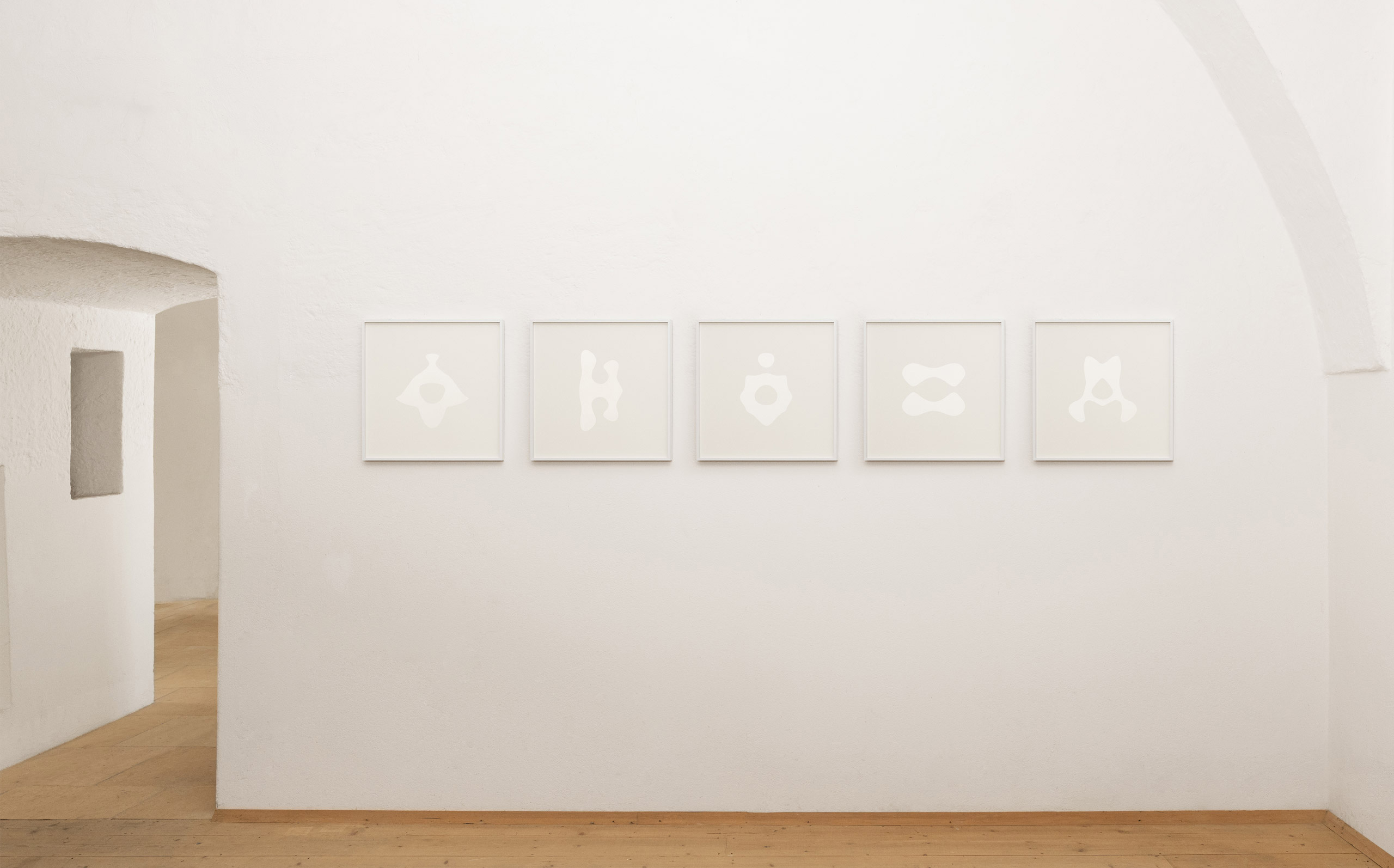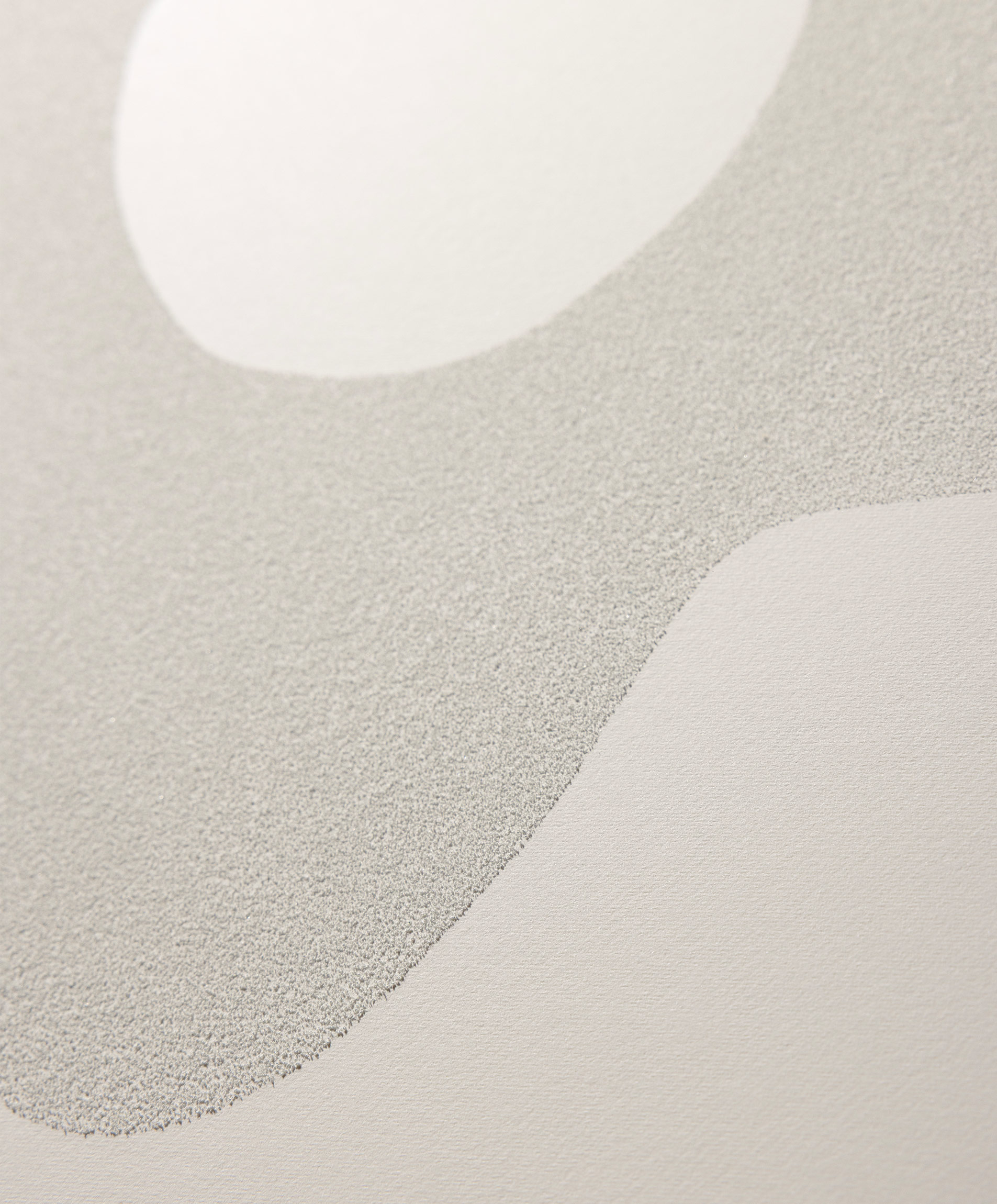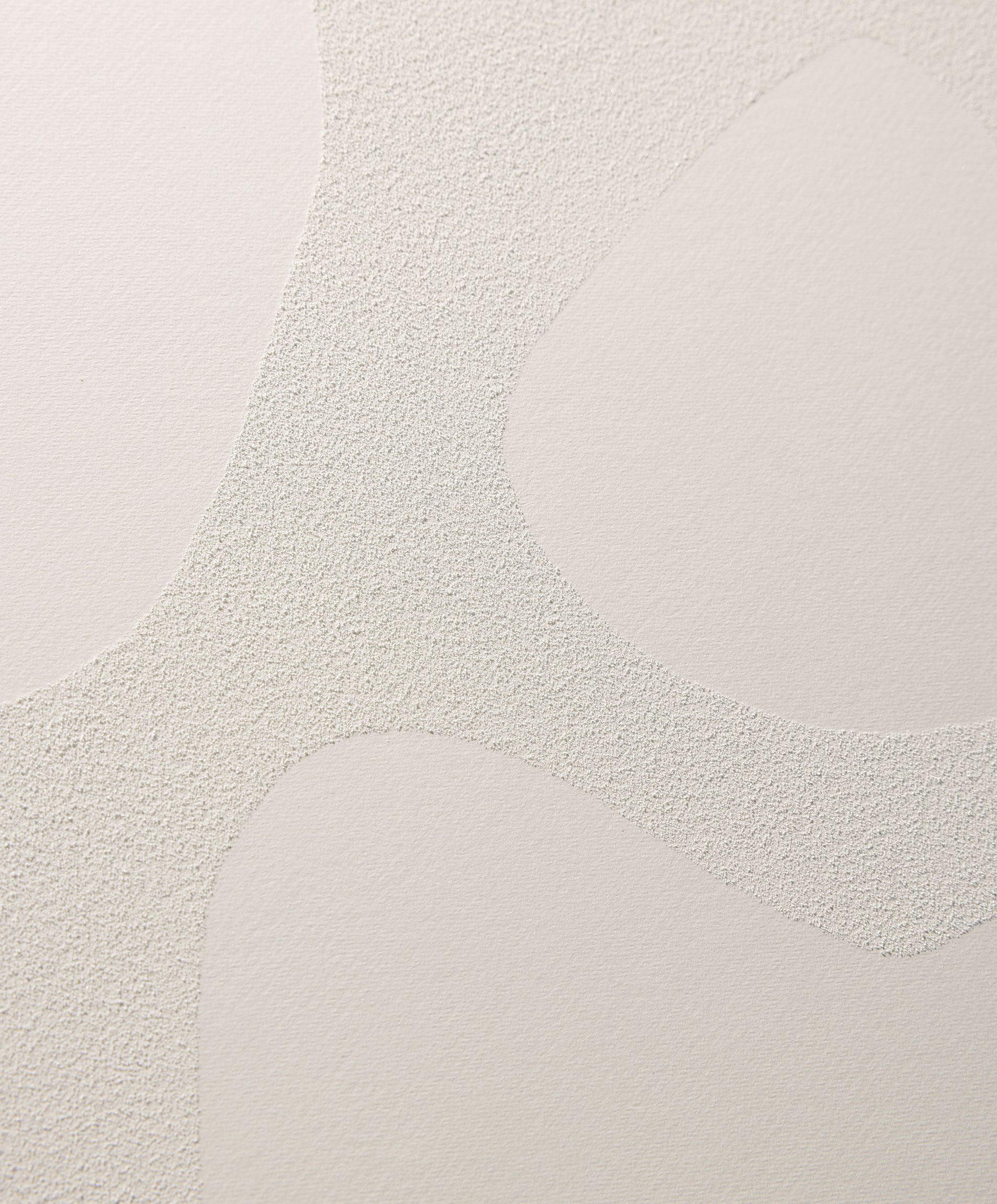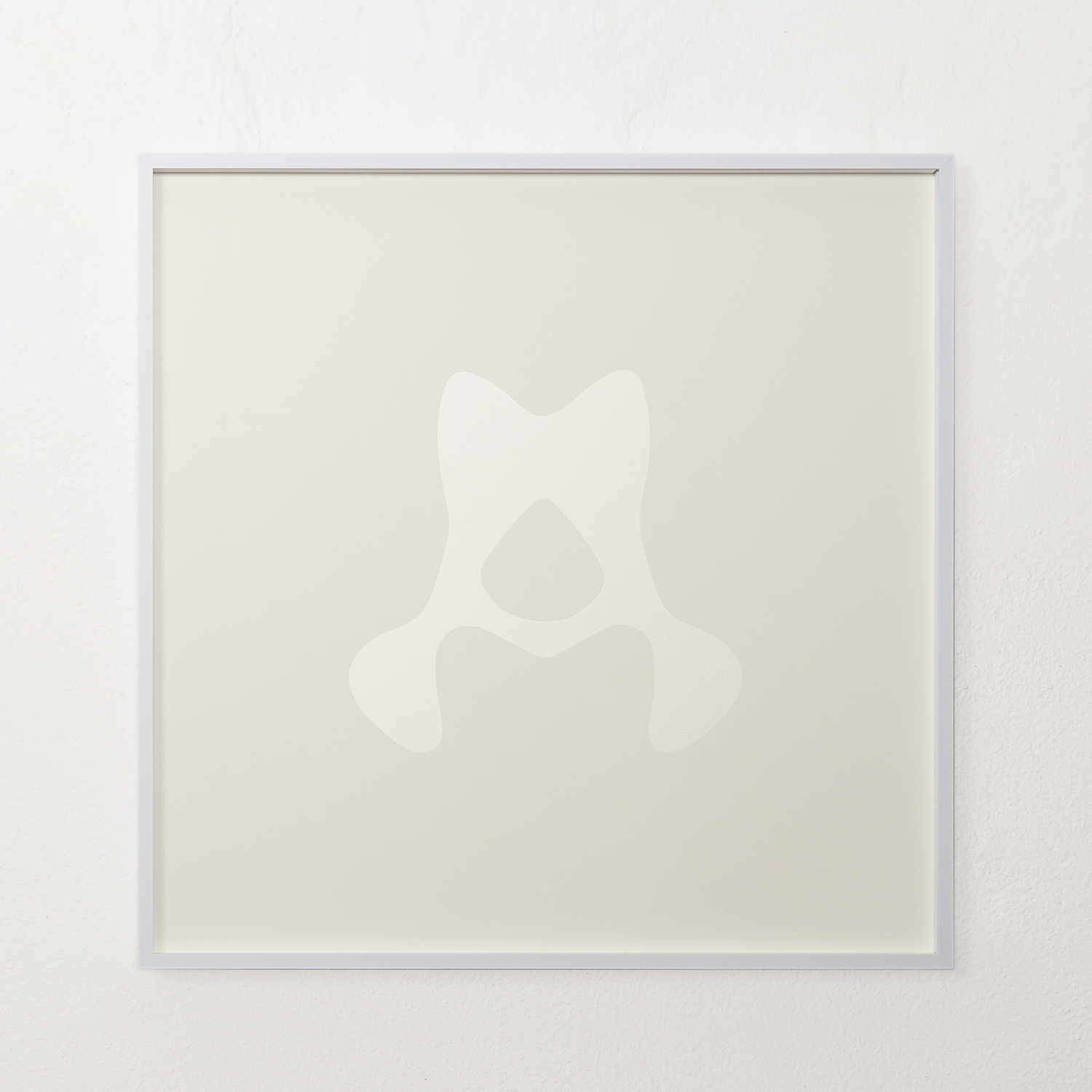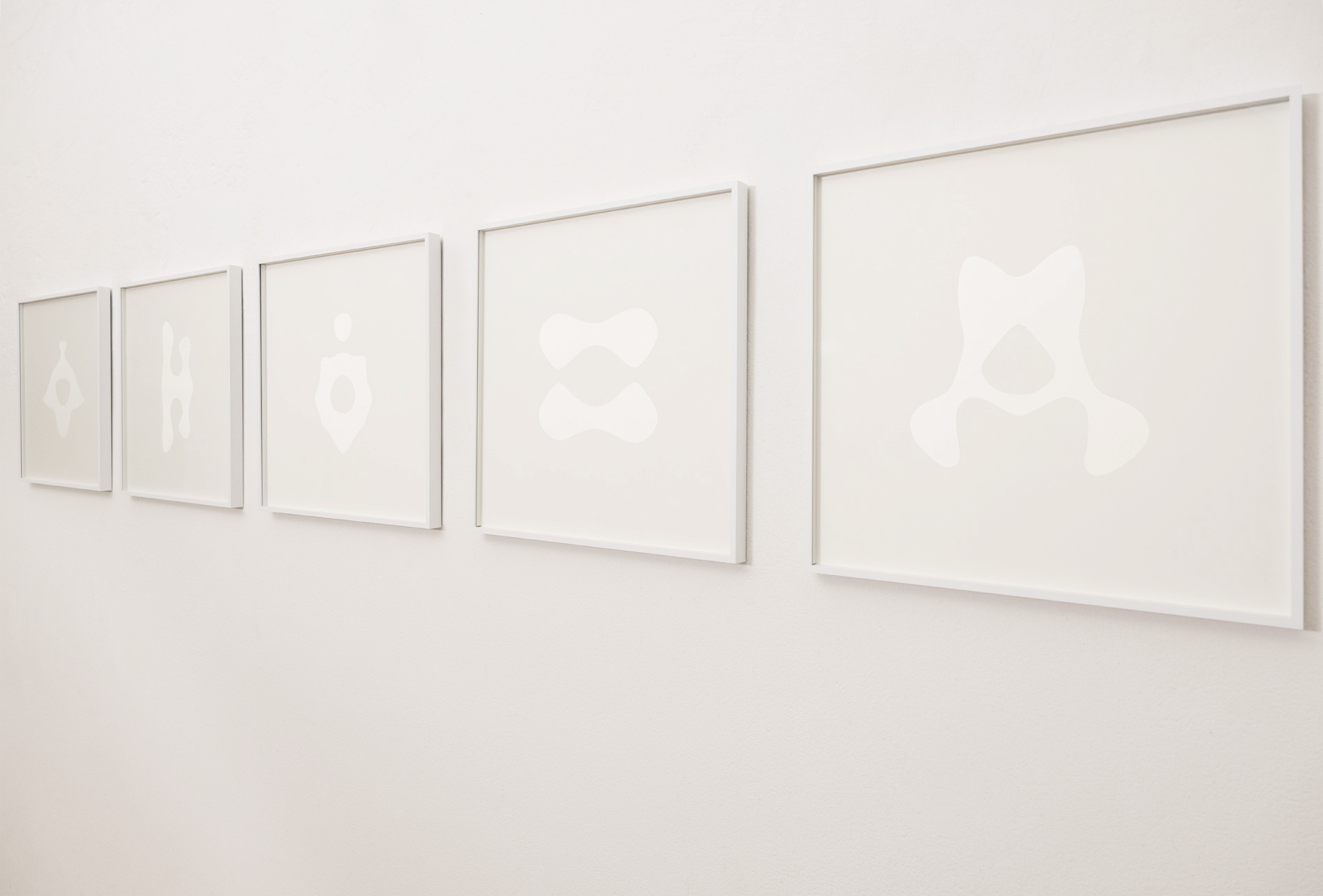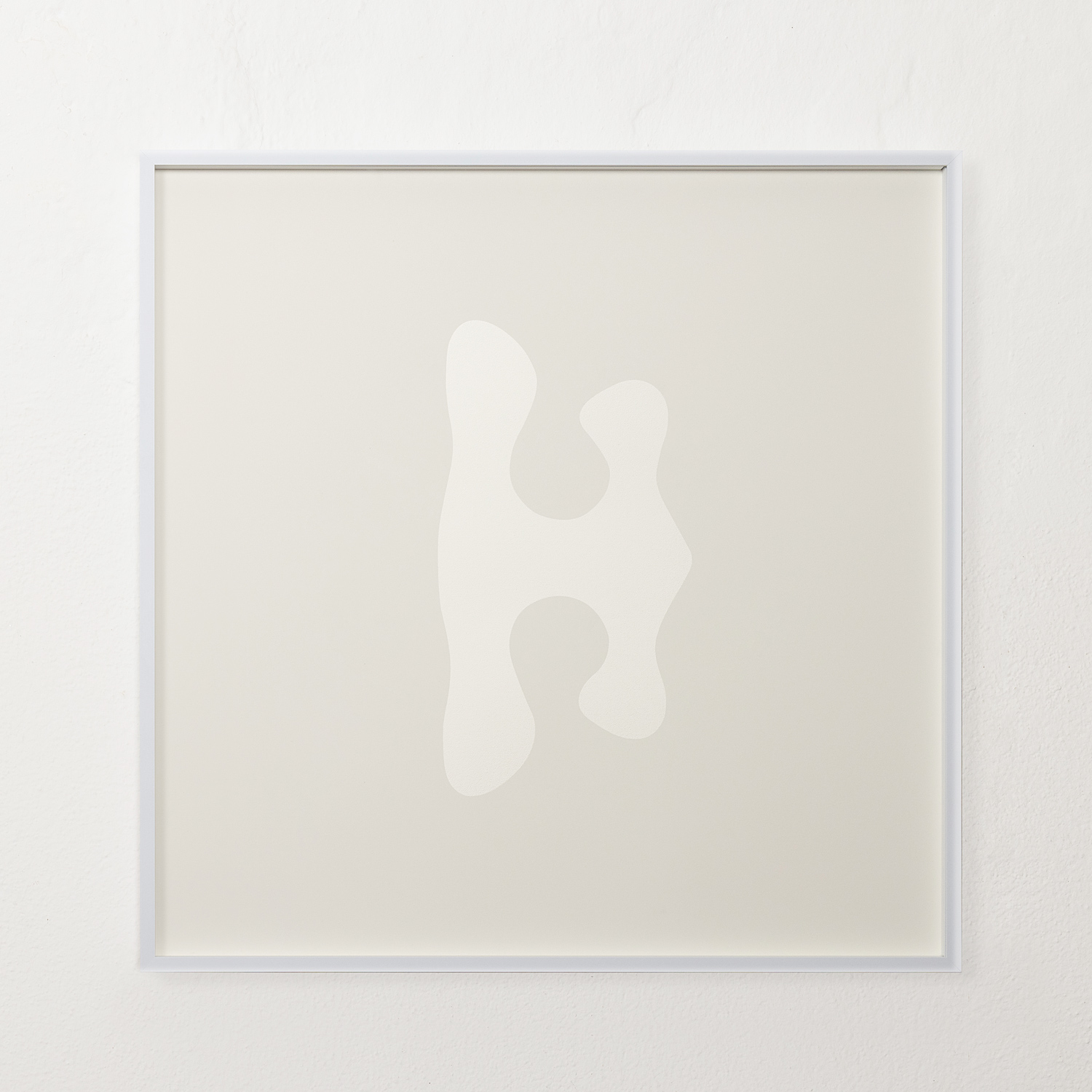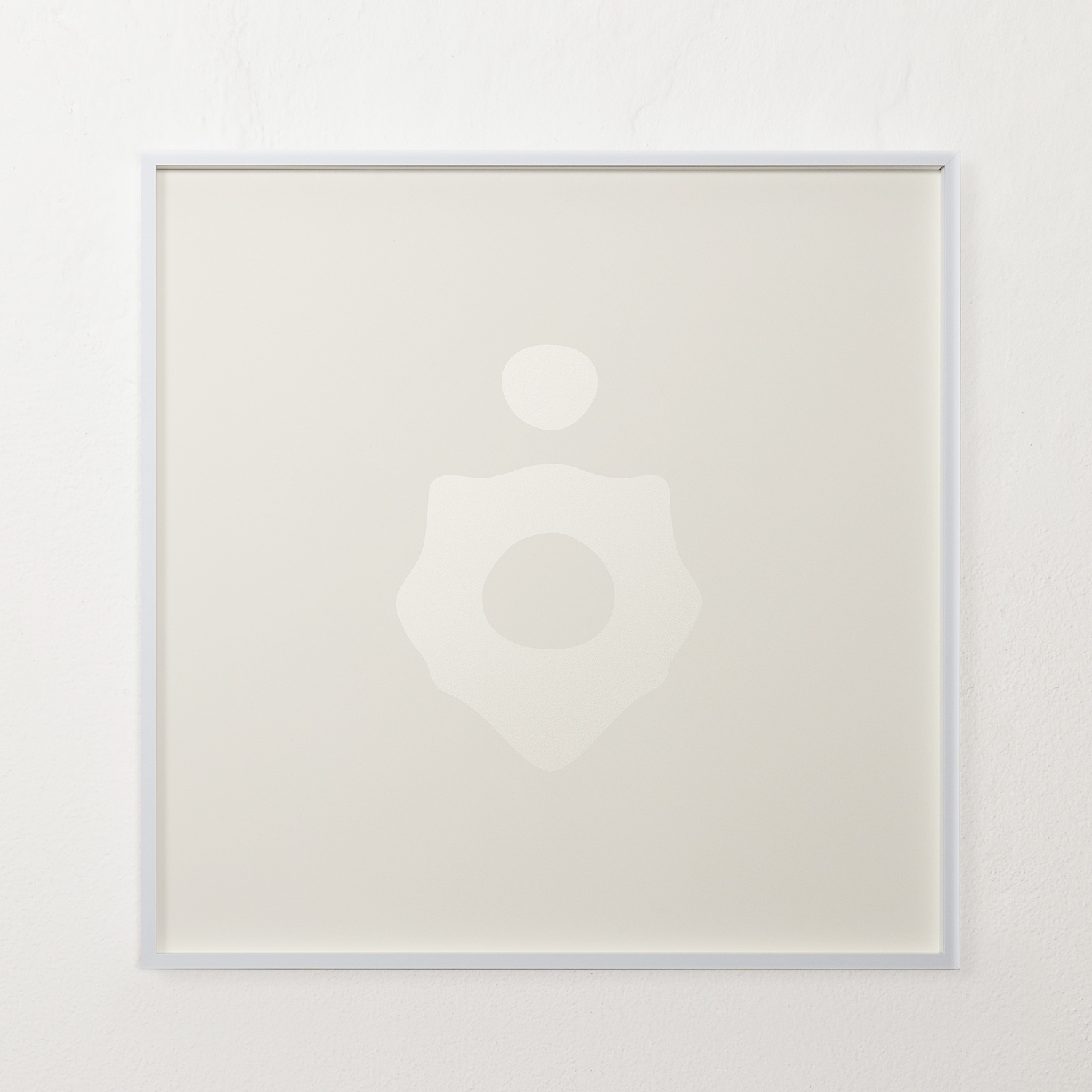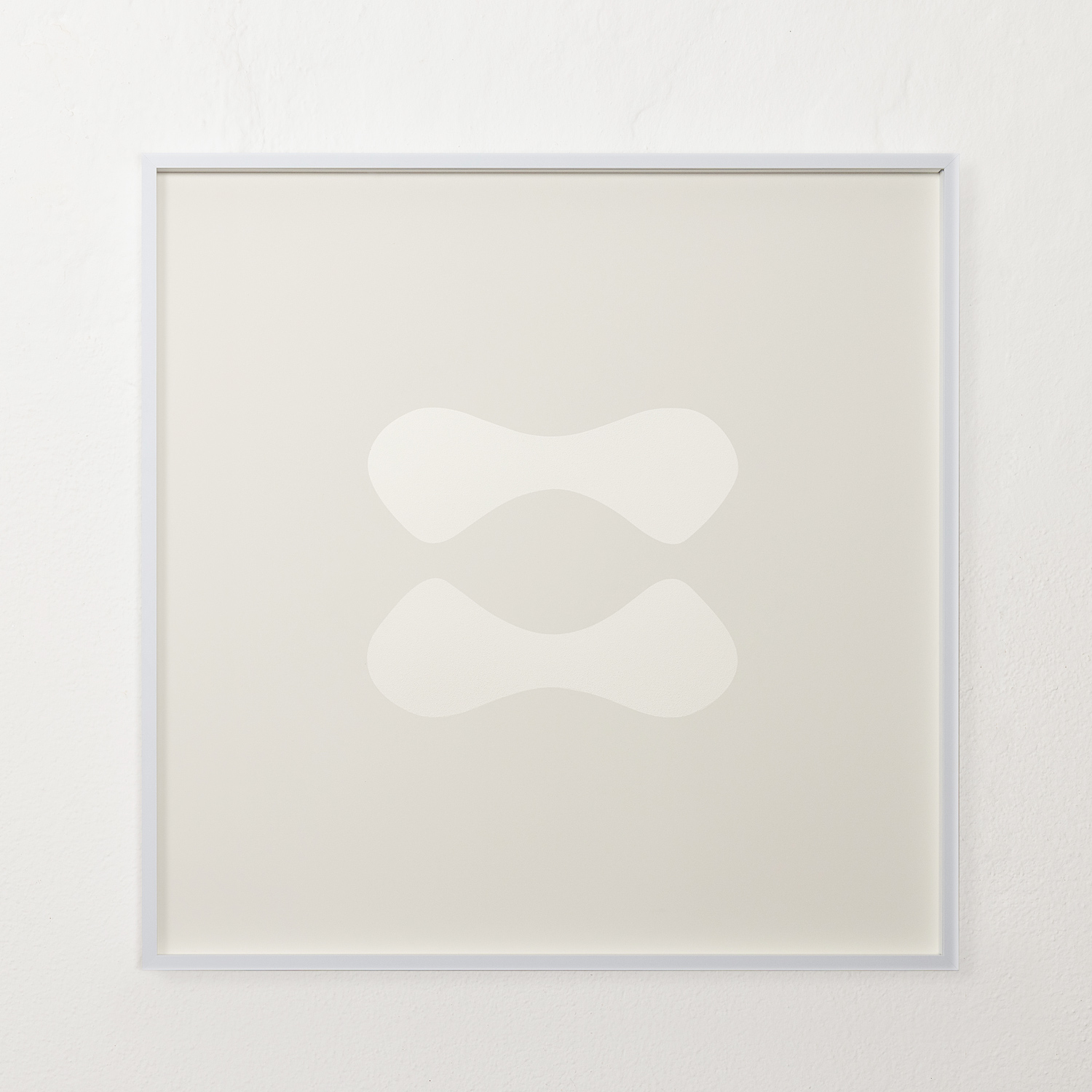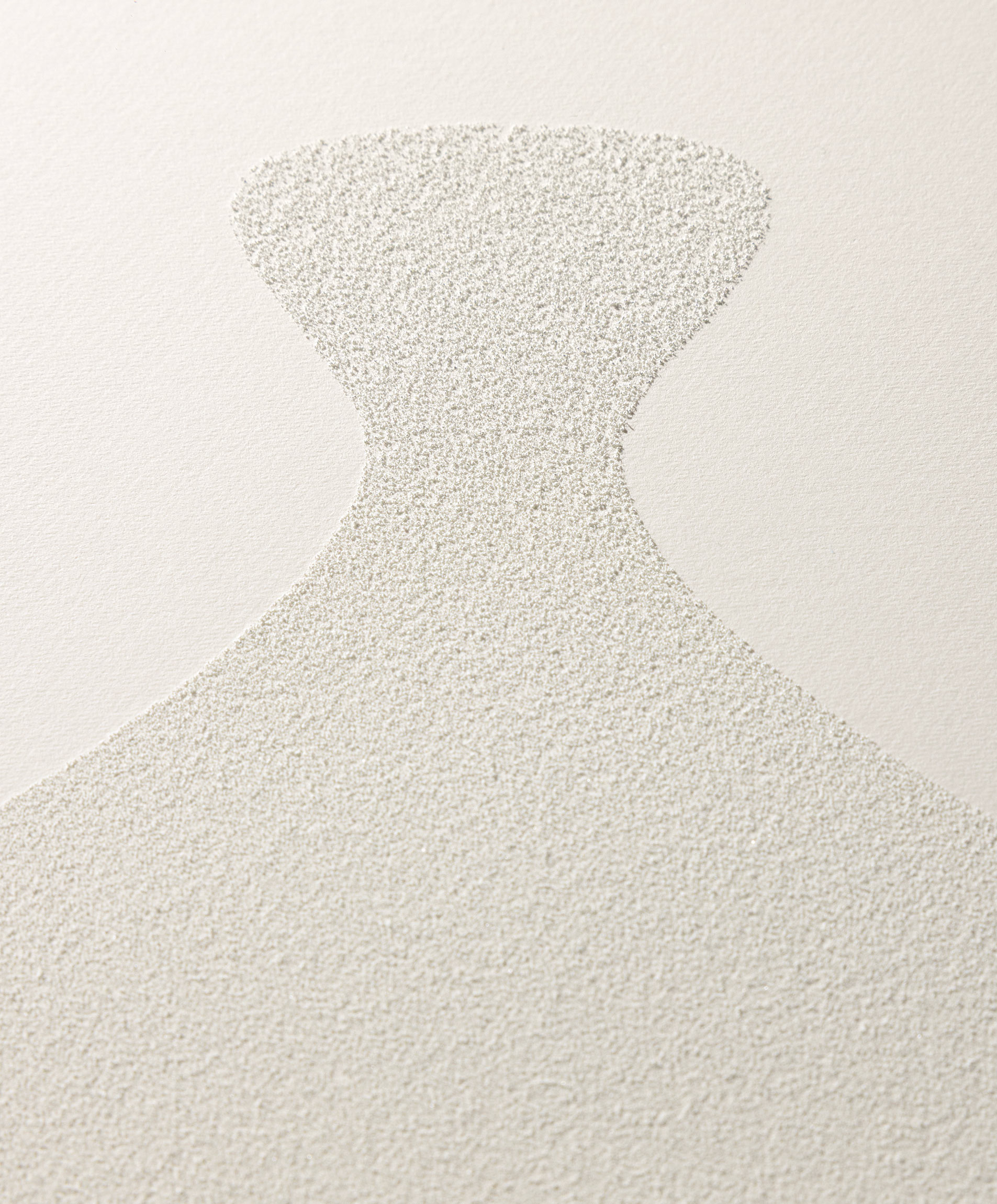Chladni
Five-part series “Chladni”, Pigment on cotton paper, 50 × 50 cm, 2025
"Chladni 1", Pigment on cotton paper, 50 × 50 cm, 2025
"Chladni 5", Pigment on cotton paper, 50 × 50 cm, 2025
"Chladni 2", "Chladni 3", "Chladni 4", Pigment on cotton paper, 50 × 50 cm, 2025

Chladni
The series Chladni makes the invisible order of sound tangible in a poetic way. It draws on the research of the German physicist and astronomer Ernst Florens Friedrich Chladni, who in 1787 was the first to make sound visible through his acoustic experiments. The patterns named after him appear when fine sand is sprinkled onto a metal plate that is set into vibration with a violin bow. The vibrations cause the sand to gather along the nodal lines, forming geometric figures – fragile snapshots of an invisible dynamic.
This body of work takes up that principle, reinterprets it, and transforms it into five independent forms. In doing so, it translates the hidden structures of sound into visible compositions on paper. Using pure pigment applied in layers, the fleeting traces of sound are preserved and transformed into a quiet visual language. Delicate surfaces emerge that cast subtle shadows depending on the light and turn the white of the paper into nuanced tones. The organic, freely interpreted structures sometimes appear sculptural, at other times they dissolve into the background – like faint sounds shifting between clarity and restraint, before fading into silence.
Stefan Macheiner
Studio: Lederergasse 67, 4020 Linz, Austria
hello@stefan-macheiner.com
Instagram
Join my mailing list – I respect your data (Privacy Policy).
